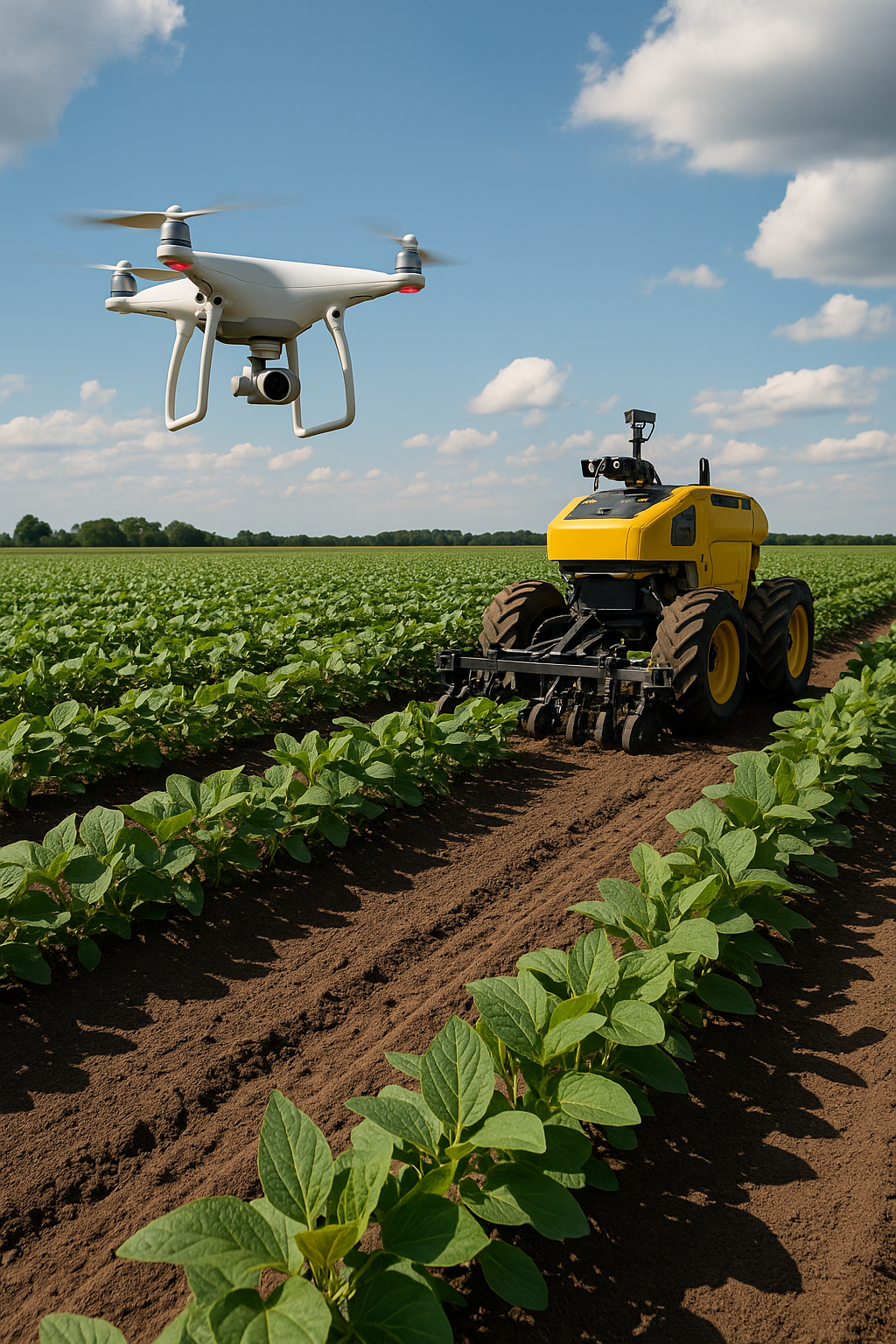Precision agriculture enters AI era: Key global trends
The review reveals that supervised learning dominates AI-driven agriculture, accounting for nearly 60 to 88 percent of all models applied in the sector. Algorithms built on deep learning architectures, such as convolutional neural networks (CNNs), recurrent neural networks (RNNs), and transformer models, have become the backbone of crop monitoring, disease detection, and yield estimation.

Artificial intelligence and robotics are rapidly transforming the foundations of agriculture, turning farms into data-driven ecosystems capable of precision, sustainability, and automation. A comprehensive study titled "AI and Robotics in Agriculture: A Systematic and Quantitative Review of Research Trends (2015–2025)," published in the journal Crops, maps ten years of technological evolution across the global agricultural landscape. The authors, representing institutions in Morocco and the United States, conducted an extensive quantitative review of research trends that have shaped the integration of machine intelligence into modern farming.
Based on more than 10,000 publications indexed in Scopus, Web of Science, and IEEE Xplore, the study leverages the PRISMA systematic review methodology to analyze research from 2015 to 2025. It identifies the core technologies, dominant regions, and future challenges defining the field, offering a clear roadmap for how AI and robotics can sustain agricultural productivity amid rising climate, labor, and food security pressures.
How artificial intelligence and robotics are transforming agriculture
The past decade has witnessed an unprecedented acceleration in agricultural digitization. The authors found that AI and robotics have shifted farming from manual management to intelligent automation, supported by drones, computer vision, and smart sensors that interpret real-time data on soil, water, crops, and pests.
The review reveals that supervised learning dominates AI-driven agriculture, accounting for nearly 60 to 88 percent of all models applied in the sector. Algorithms built on deep learning architectures, such as convolutional neural networks (CNNs), recurrent neural networks (RNNs), and transformer models, have become the backbone of crop monitoring, disease detection, and yield estimation.
Among these innovations, drones (unmanned aerial vehicles) have emerged as the leading technology, representing 40 to 60 percent of all agricultural robotics research. Their aerial imaging capabilities enable precision irrigation, pest control, and field mapping at scales previously impossible with ground-based systems.
Meanwhile, ground robots and hybrid autonomous systems are gaining ground for tasks like harvesting, seeding, and soil sampling, although their research footprint remains smaller. The study emphasizes that 65 percent of analyzed robotic systems operate fully autonomously, signaling a shift toward self-directed machines that can learn, adapt, and act without human intervention.
Geographically, China, India, and the United States have led the surge in AI and robotic research in agriculture, while Sub-Saharan Africa, Southeast Asia, and Latin America remain underrepresented. The uneven distribution reflects disparities in infrastructure, investment, and access to technological resources, which continue to shape the pace of agricultural innovation globally.
Technological advances and persistent gaps in intelligent farming
The authors used keyword co-occurrence mapping to identify four dominant research clusters defining the field: computer vision and deep learning, smart farming and IoT integration, remote sensing and yield estimation, and machine learning for precision agriculture. These clusters reveal how AI and robotics have evolved from basic automation to intelligent perception-driven systems capable of complex decision-making.
The study notes a growing emphasis on AI–IoT integration, with more than 50 percent of analyzed research incorporating networked sensors and cloud-based data management systems. This convergence enables farms to become connected ecosystems, allowing devices to monitor field conditions continuously and make autonomous adjustments to irrigation, fertilization, or pest control systems.
However, the authors identify several enduring challenges. Fewer than 30 percent of models reviewed in the study have undergone real-world field validation, limiting their reliability outside controlled experimental settings. Furthermore, only 3 percent of the reviewed studies employed explainable AI (XAI) frameworks, raising concerns over transparency, interpretability, and user trust.
Crop bias remains another issue: cereals such as maize, rice, and wheat dominate research, while horticultural and high-value crops, including fruits and vegetables, receive limited attention. This imbalance risks excluding smallholder farmers and regions reliant on diverse crop systems.
The authors also warn of technological inefficiencies, including energy-intensive deep learning models, fragmented data standards, and insufficient cross-platform interoperability, which hinder scalability in resource-constrained environments.
Policy, ethics, and the road Ahead for sustainable agricultural AI
While technological innovation drives efficiency, the study underscores the socioeconomic and ethical implications of automating agriculture. Labor displacement, data privacy, and technology inequality are emerging as major concerns. The replacement of manual labor with autonomous systems could exacerbate unemployment in regions where agriculture remains a primary livelihood.
The study highlights that many developing regions lack the digital infrastructure and policy frameworks needed to support AI adoption responsibly. Without equitable technology transfer and capacity building, small-scale farmers risk being left behind in the ongoing digital transformation.
To address these gaps, the authors propose a strategic research and policy roadmap that balances innovation with inclusivity. They advocate for:
- The development of domain-adaptive and field-validated AI models to ensure robust performance under diverse agroecological conditions.
- Integration of explainable AI frameworks such as SHAP and LIME to enhance algorithm transparency and regulatory compliance.
- Advancement of energy-efficient AI through federated and neuromorphic learning, reducing computational costs while improving scalability.
- Investment in swarm robotics and multi-agent reinforcement learning to enable coordinated decision-making among robotic systems in large-scale farming.
- Promotion of climate-smart AI solutions designed to optimize soil health, water efficiency, and carbon management.
These recommendations align with global sustainability goals by linking agricultural automation to environmental resilience, social equity, and data accountability.
The study also highlights the growing necessity for international collaboration, calling for shared data frameworks and open-access agricultural AI repositories to accelerate innovation while safeguarding ethical use.
- FIRST PUBLISHED IN:
- Devdiscourse









